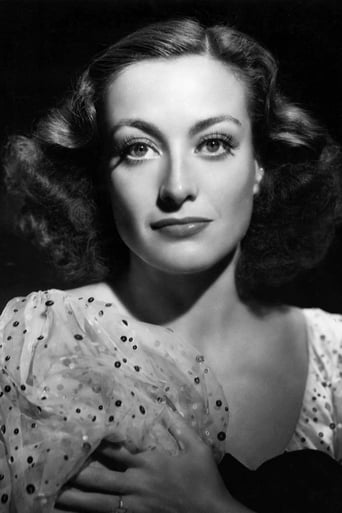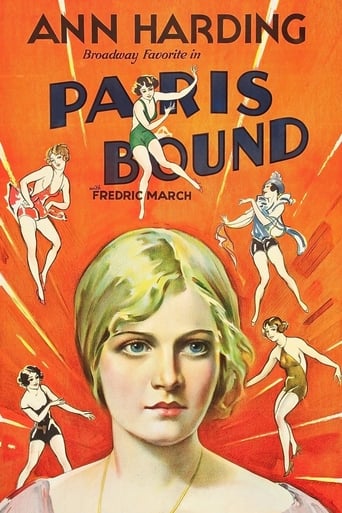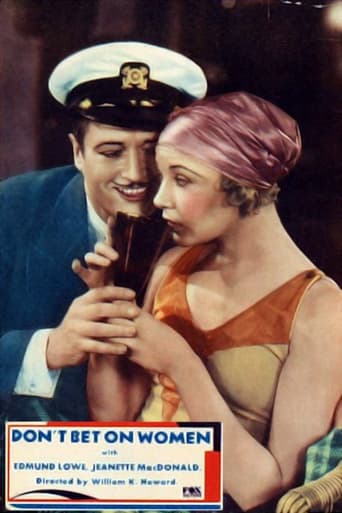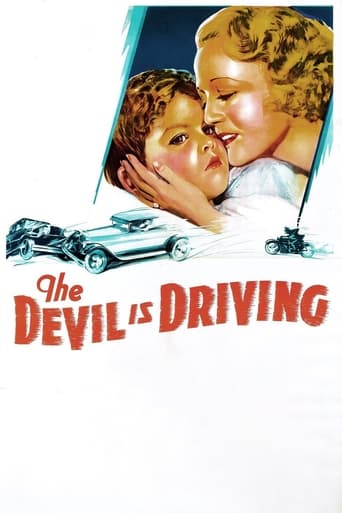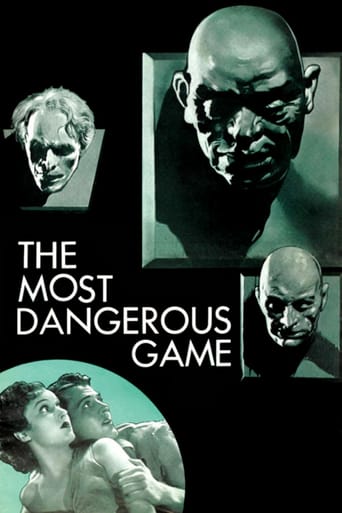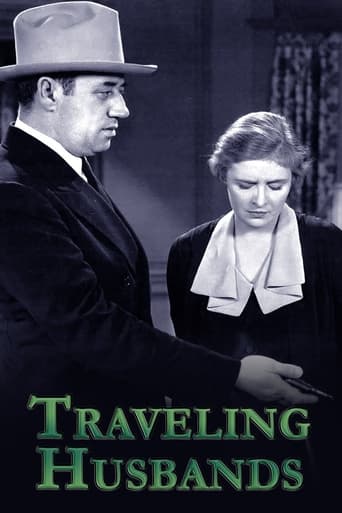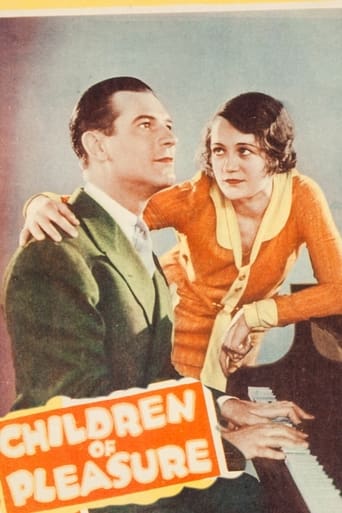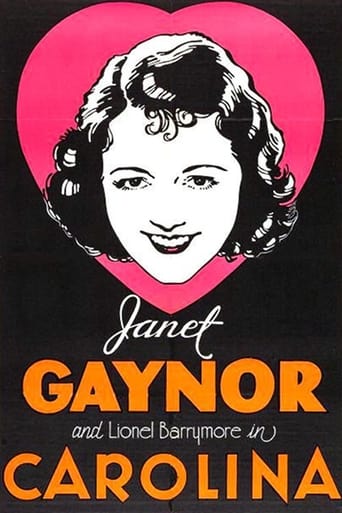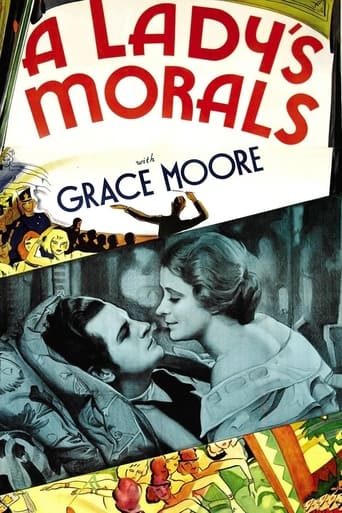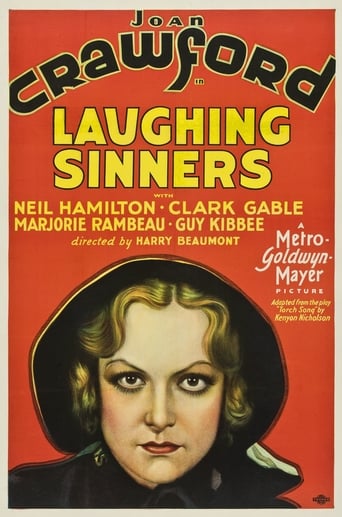
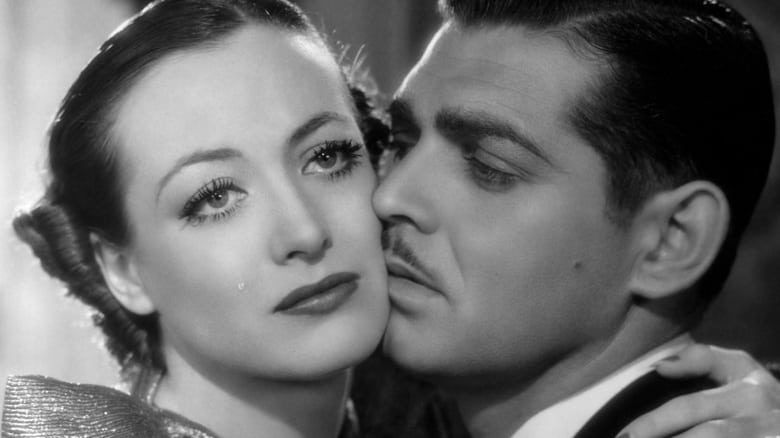
Laughing Sinners (1931)
Ivy Stevens is a cafe entertainer in love with a shifty salesman who deserts her. In attempting to commit suicide, she is saved by Carl, a Salvation Army officer. Encouraged by Carl, Ivy joins the Salvation Army. When her old flame re-enters her life, Ivy finds she is still attracted and begins another affair with him.
Watch Trailer
Cast
Similar titles
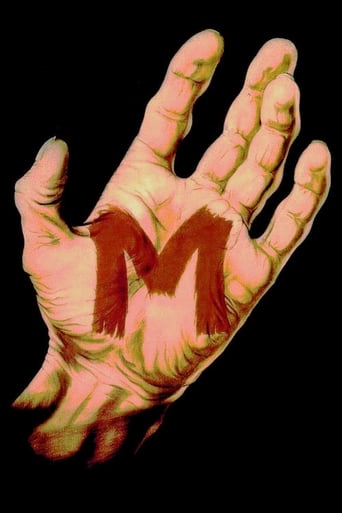
Reviews
Fanciful, disturbing, and wildly original, it announces the arrival of a fresh, bold voice in American cinema.
The storyline feels a little thin and moth-eaten in parts but this sequel is plenty of fun.
The story, direction, characters, and writing/dialogue is akin to taking a tranquilizer shot to the neck, but everything else was so well done.
An old-fashioned movie made with new-fashioned finesse.
MGM at its most intolerable, with Louis B. Mayer imposing his hypocritical morality on a dime-novel romance. Bad girl Joan Crawford is cavorting with the supremely unattractive traveling salesman Neil Hamilton, but is redeemed by--how's this for casting against type--Salvation Army major Clark Gable. Together the photogenic twosome wander off to host Salvation Army luncheons, dance around the maypole, and sing "London Bridge" to underprivileged tots. Designed to show off Crawford's versatility--she sings, dances, and almost acts--it instead reveals how deficient she is at this point in her career in most of these endeavors, and Gable looks bored. Anyway, it's short, and Hamilton at least gets to rub elbows with a fine crew of fellow salesmen, including Roscoe Karns, Guy Kibbee, and Cliff Edwards.
Joan Crawford is a café dancer whose long term, long distance affair with traveling salesman Neil Hamilton comes crashing to a finish when he dumps her by leaving her a goodbye note written on the back of a menu. Despondent, she sets out to jump into the river, only to be stopped and saved (in more than one sense) by mustache-less Salvation Army officer Clark Gable. Next thing you know, Joan is sporting an Army uniform herself and singing hymns .but sooner or later, Hamilton is bound to show up again. And what then? The plot isn't much, but Crawford's performance is excellent as her character veers wildly from joyous flapper to reformed sinner. The scene where she reads Hamilton's note is stunningly sad. Gable never looks quite natural but does seem to contain a reservoir of strength and energy that lurks just beneath the surface of his peaceful character. –At least that's my view from this time and place; hard to imagine what effect his performance would have had on a 1931 audience just becoming familiar with that face, that screen presence.The highlight of the film is almost certainly Joan's dance in an opening scene—donning a fake nose and beard and a farmer outfit, she humorously bounces around for a couple of minutes before shedding the costume and really cutting loose, to her audience's delight and her own obvious joy. It has to be said that Joan as flapper is quite a bit more exciting than Joan as saved woman. Hamilton is superb in a thoroughly despicable role. Roscoe Karns and Guy Kibbee are fellow salesman and together they certainly portray the kind of sleazy crew who inspire good people to lock up their daughters.Overall—no surprises but Crawford is certainly worth watching, especially the opening and closing minutes.
This film is probably the weakest of the Gable/Crawford film pairings. It's not that their performances aren't great, it's just that they're not given that much to do. The storyline is very basic - Joan is a performer in a nightspot who has had a long-distance affair going with a traveling salesman, Howard Palmer (Neil Hamilton), for the past two years. He dumps her to marry the boss' daughter so he can further his career. He doesn't even have the courage to tell this to her face - he writes it on the back of a menu at the cafe and leaves before she reads it.This action wounds Ivy (Joan) to the core, and she is about to jump off a bridge one night when she is stopped by a Salvation Army member, Carl Loomis (Clark Gable). The two become friends and pretty soon Ivy is donning a Salvation Army uniform herself. One night a year later, when Ivy and the Salvation Army are proselyting in a nearby town, she runs into her ex-lover Howard Palmer. After a year of separation Howard has decided he would like to have it both ways - he'd like to have his bang (Ivy) and his bucks (his wife of convenience). Will Ivy stand firm on her new beliefs or will she fall? This film does have a few good things going for it. In the first part of the film, when Ivy is still working in the nightclub, we get to see Joan sing and dance for an entire number. She doesn't do much of that in her long film career and it is always a treat. Then there is the somewhat ridiculous spectacle of Clark Gable as a Salvation Army worker - this is before he became known more as a charming sinner rather than a laughing one. You can chalk up that bit of casting to Louis B. Mayer. This film was originally shot with Johnny Mack Brown in the lead, but Mayer didn't like the outcome and reshot it with Gable. Finally there is Neil Hamilton as one of the most slippery characters you'll find. Hard to believe he didn't have a real career breakthrough for almost another 35 years when he was cast as Batman's Commissioner Gordon.This whole issue of the thin line between good and evil in a person and the fact that those two sides exist in everyone is much more artfully explored in 1932's Rain, again starring Joan Crawford. That's a film I highly recommend.
One of those movies about fallen women who reform that were common in pre-Code Hollywood, LAUGHING SINNERS, also known as COMPLETE SURRENDER, comes less as a movie of quality as standard fare that features the two leads, Crawford and Gable -- she already a star, he a rising actor -- coming together and making early music to the viewer's eyes. Before Hepburn and Tracy, these were the ones the public wanted to see together even if the movie in itself was less than memorable, and MGM gave it to them 8 times.Also a feature where one can get to see Crawford dance, sing, and indirectly, essay what would become a breakout role in RAIN only a year later.
